Swapping your tarmac driveway for this smart paving solution can reduce your risk of flooding
This unusual grass paving for driveways can not only prevent flooding but also offer an environmentally friendly alternative to traditional tarmac

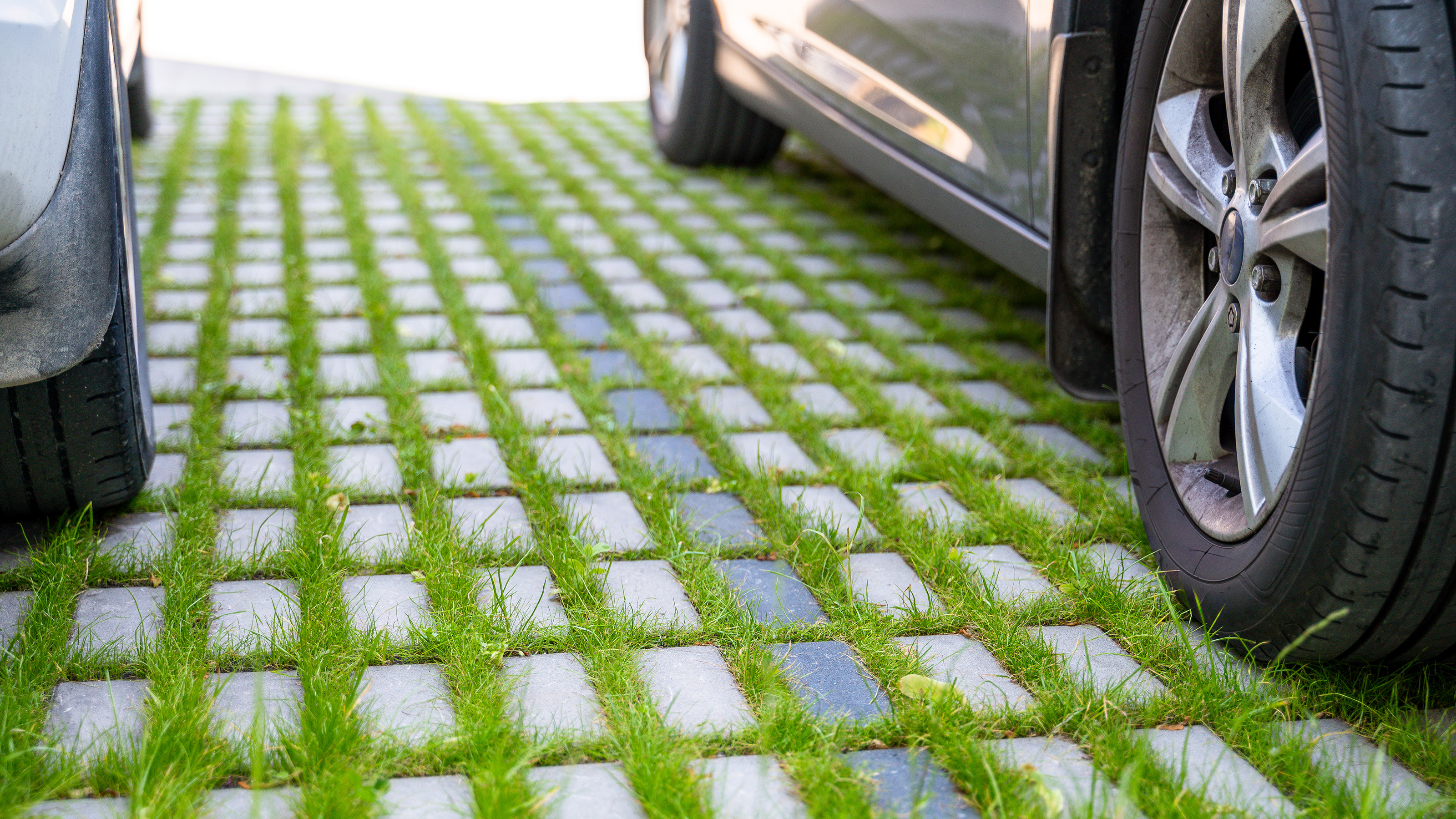
Concerned about flooding? You're not alone; it is a growing concern in the UK. However, making a few changes to your driveway ideas can help reduce your flood risk by increasing the drainage outside your home.
A recent report from the Environment Agency says that around 4.6 million homes are at risk of flooding, with predictions estimating that this figure could be as high as one in four households by 2050.
All is not lost, though; there are clever solutions available that can help ease flooding problems. Permeable pavers are one option; however, for a highly permeable and more sustainable driveway, grass paving is set to be a game changer.

What are grass pavers
Grass paving, also known as grow-through paving, is a unique driveway material. Typically made from concrete that has been cast to create a grid or lattice pattern, it is designed to help improve drainage in a garden.
The pavers provide hard standing for parking while letting grass grow in the negative spaces. If resurfacing a driveway, grass pavers are a great option to reduce flooding and improve the sustainability of your garden.
Reported to be as easy to install as traditional pavers – Pavestone has a step-by-step installation guide – the pavers are laid on a compacted MOT Type 1 sub base. This can be done DIY or by professionals, depending on your confidence and your available time and budget. Once installed, the gaps between the pavers need to be filled with soil and seeds.
One important thing to note is that if planning to swap a driveway – such as a gravel driveway – for grass pavers, you need to choose the best time to get your driveway done, which is usually in late spring or summer.
Sign up to our newsletter for style inspiration, real homes, project and garden advice and shopping know-how
Alice Turner, product specialist at Marshalls, predicts that grass pavers will slowly become a common option for driveways up and down the country. 'We will likely see more homeowners opting for permeable paving and grass-guard driveways, both offering natural filtration for the anticipated British rainfall. Searches for ‘grass pavers for driveway’ have increased by 53% in the last year, with more homeowners looking to mitigate flooding whilst maintaining the natural aesthetics of grass areas.'
Benefits of grass pavers over traditional tarmac
1. Reduce risk of flooding
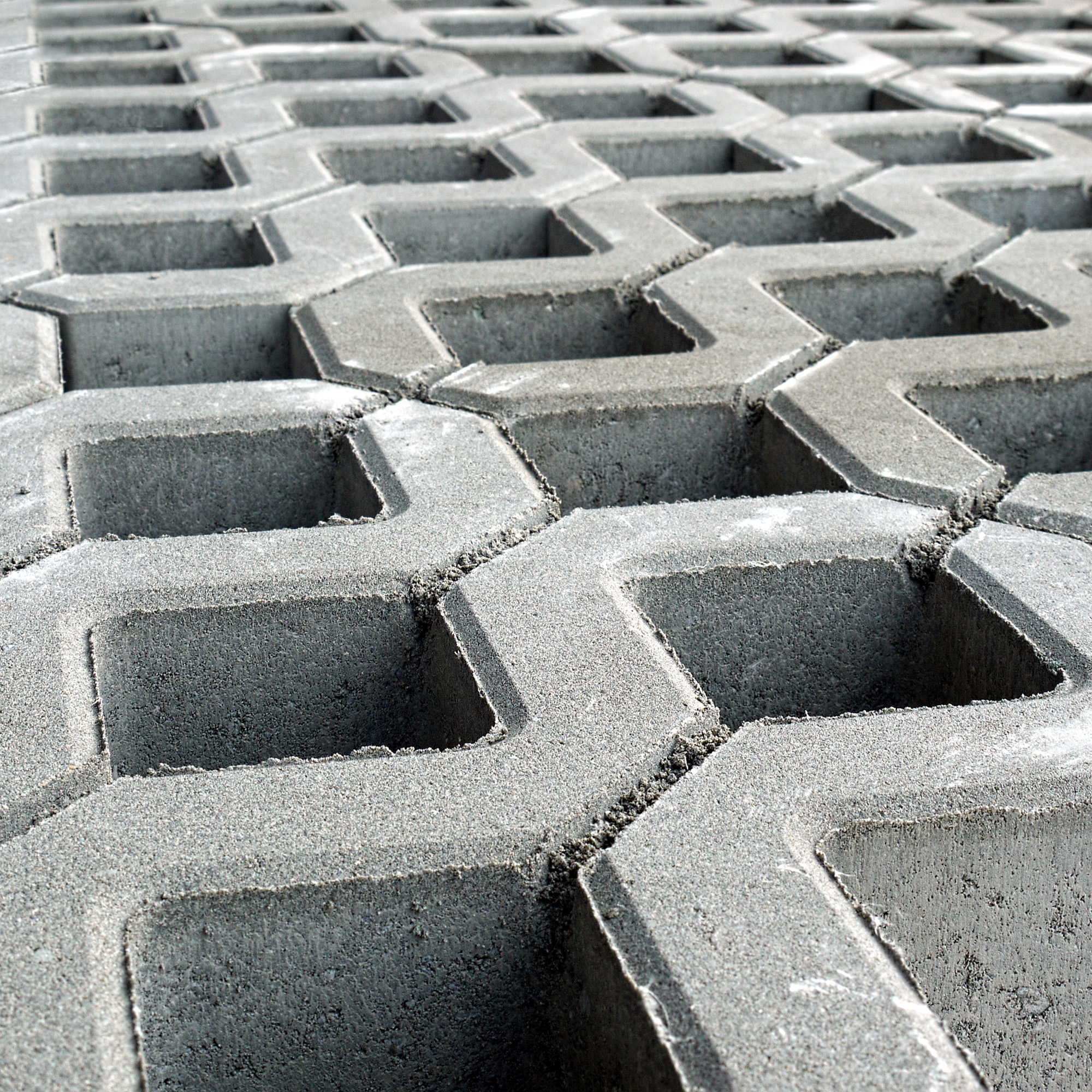
The main benefit of grass pavers over tarmac is their increased permeability. 'Paving, tarmac and concrete can increase the amount of rainwater that runs off by as much as 50 per cent,’ says Dr Nicholas Cryer, environmental horticulture expert at the RHS.
With these pavers, the water passes through the driveway and into the subsoil below. 'This allows rainfall to naturally soak into the ground and prevents it from running off into unwanted areas (such as the street at the front of your home), which could contribute to localised flooding during downpours,' explains experts from Paving Direct.
If you're not ready to repave your driveway, this style of paving could also be used to create front garden paths and help to improve lawn drainage.
2. Reduce pollution
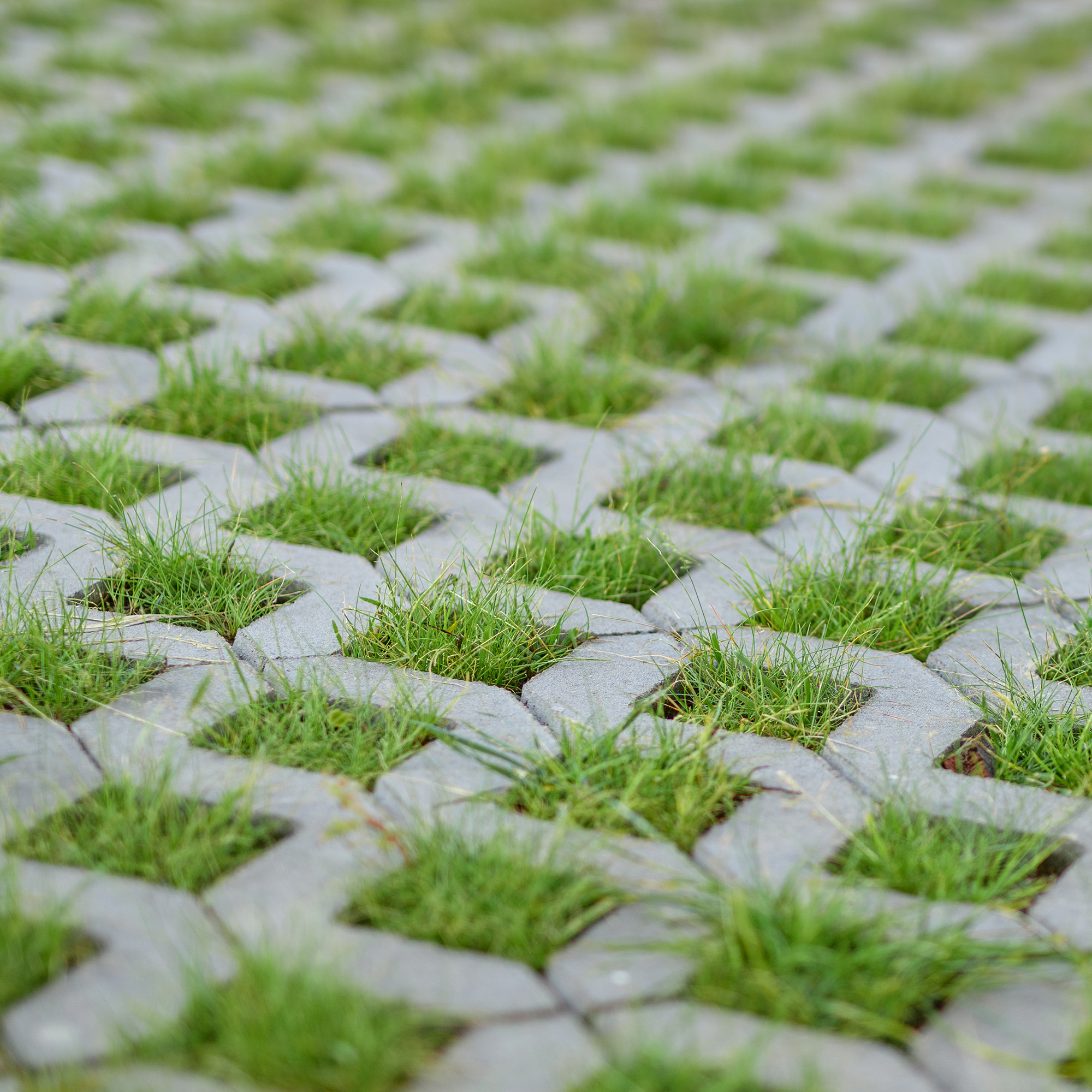
The benefits of grass pavers aren't limited to just reducing flood risk – they also help reduce water pollution.
'Hard surfaces such as concrete and asphalt collect pollution (oil, petrol and brake dust) that is washed off into the drains. Many drains carry rainwater directly to streams or rivers where the pollution damages wildlife,’ add the resin driveway experts at Erinstone. However, with these pavers, the subsoil helps to filter out pollution, preventing it from contaminating the waterways.
3. More aesthetic than traditional driveways
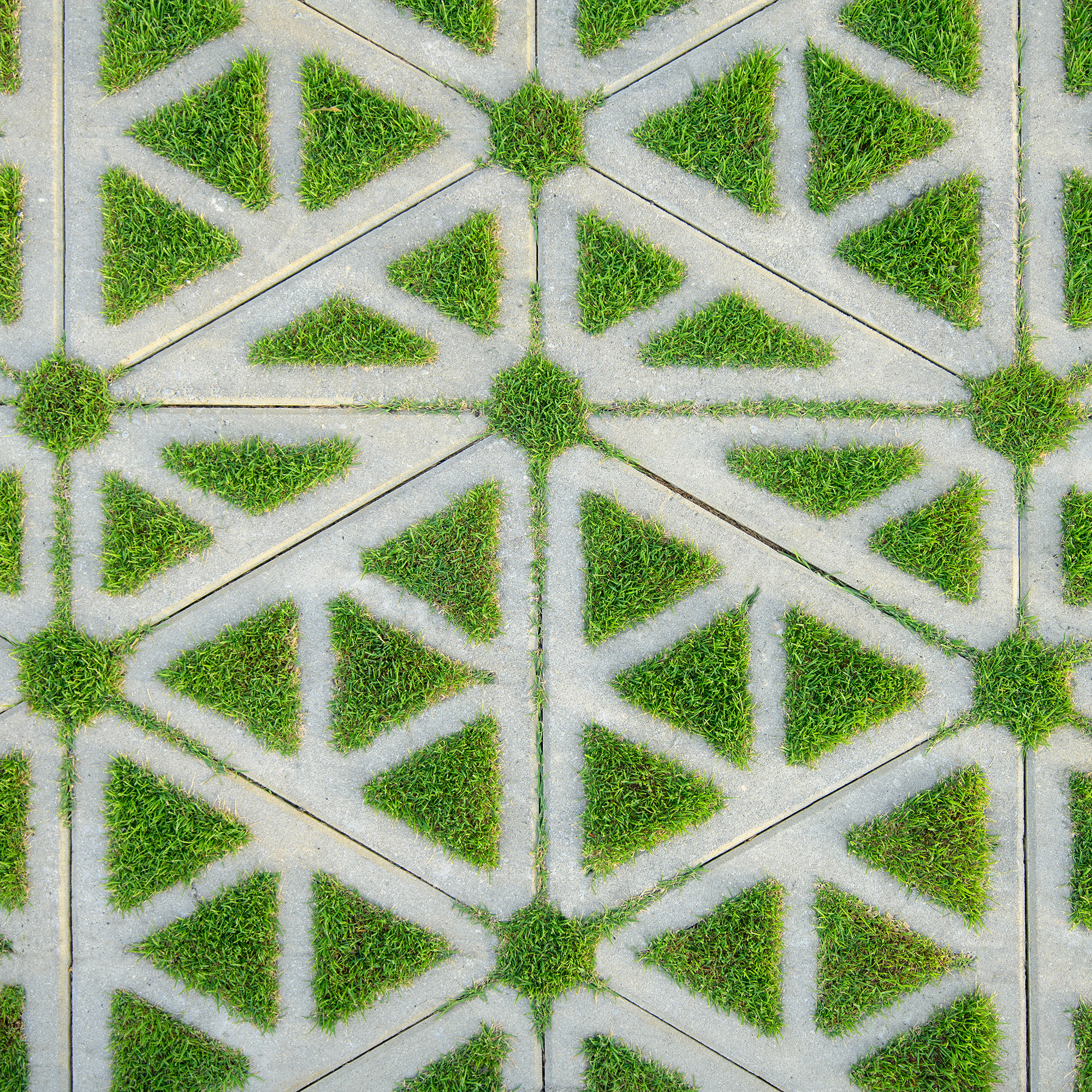
Grass pavers also offer a more aesthetic alternative to traditional driveways. This style of paver is a great way to put your stamp on your front garden, as the pavers are available in a range of patterned designs – something that is on the up.
'Driveways play a huge part in the kerb appeal of a property, with well-maintained pavers making the house more attractive to onlookers and potential buyers. Searches for ‘patterned driveways’ have grown by 53% over the past year, so we’ll likely see homeowners have more creative input in their driveway’s appearance,' says Alice Turner, product specialist at Marshalls.
Grass paver designs include classic square or diamond layouts as well as more decorative concentric circles or modern waves. Grass Park Virage available from Paving Direct, permeable block paving have nine different laying patterns – letting you choose the right design for your space.
This creates a more discreet and decorative alternative to expansive areas of grey in front of your house.
4. Avoid planning permission
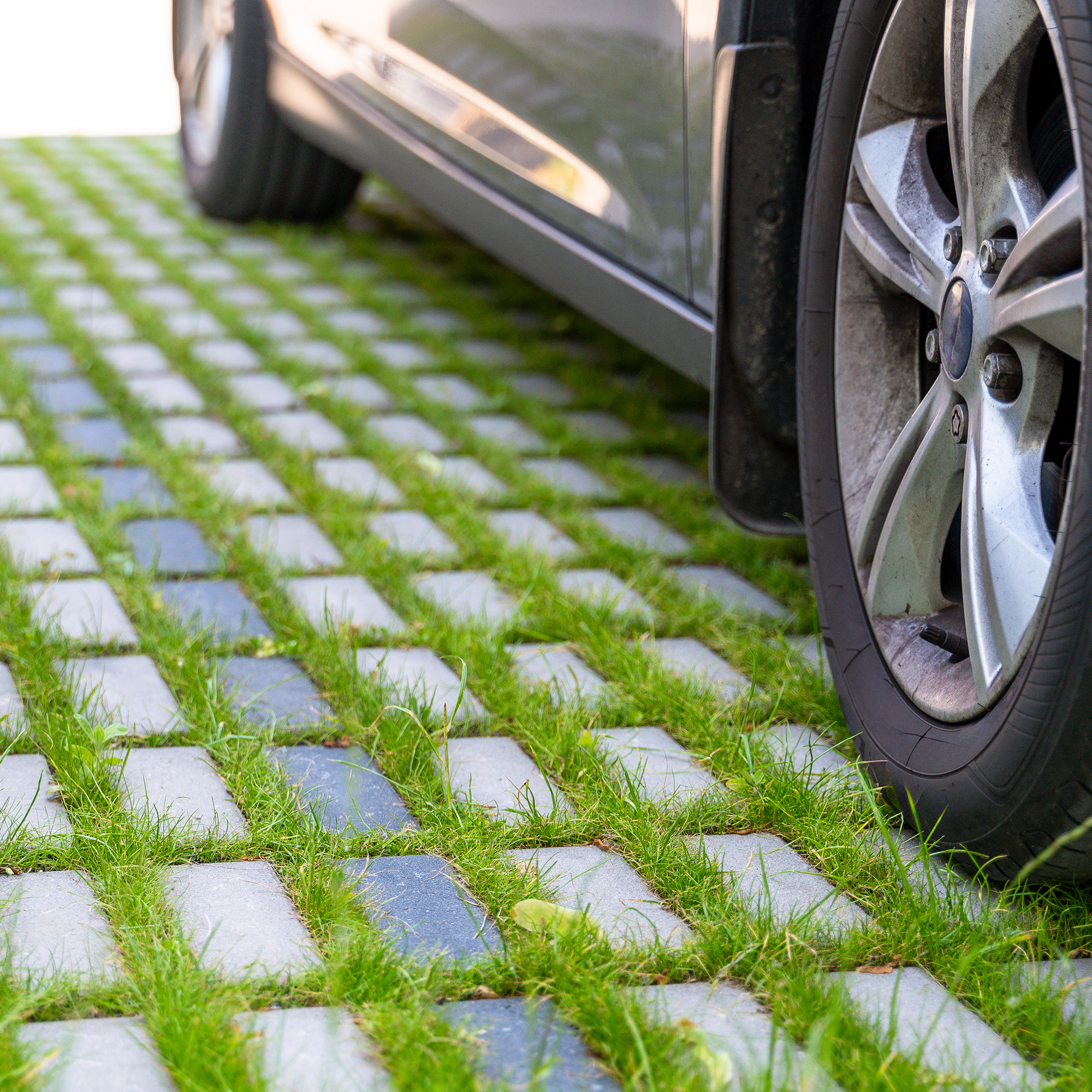
As grass pavers are permeable, this style of driveway doesn't need planning permission as it will be classed as permitted development.
This is something confirmed by the experts at Paving Direct: 'if you are using permeable paving to pave your own domestic driveway or area at the front of your property, then you can do so without applying for planning permission.'
This will save you both time and money in your renovation project.
What to grow between pavers?
Grass is the typical choice for filling these pavers – often chosen for its easy availability, efficient growth pattern and affordability. The addition of grass (or other plants) makes this one of the only pollinator-friendly driveway materials.
Your choice of grass seed will depend on your needs. Fast-growing seeds will quickly create a beautiful, lush mat, but it will need mowing more frequently. Slower-growing grass – such as Boston Seeds' Grass for Slow Growing Lawns available on Amazon –takes longer to establish but will need less care in the long run.
With either type of grass seed, be sure you know the best time to sow grass seed and that you know when to start cutting grass after winter for the greatest chance of success.
Grass is not the only option, though; also consider low-growing ground cover plants for added colour and character. One thing to note when opting for these plants is that they need to grow lower than the top of the pavers, so as not to be destroyed by the cars.
Regardless of which plant you choose, the secret to making this style of driveway stand out is to ensure that each plug is fully filled. You want to create a lush carpet of planting, without any visibly bare soil.
Plants to try:
- Creeping Thyme (available at hayloft) - It will quickly establish a carpet of purple, which not only looks beautiful but will also attract pollinators.
- Mint 'Corsican' (available at Dobies) - It is a quick-growing ground cover (reaching between 2 and 7cm tall) that can thrive between pavers.
- Micro White Clover (available at B&Q) - Clover offers a lower maintenance alternative to grass. It is drought resistant and will quickly form a lush matt between pavers.
For a super low-maintenance option, consider filling the gaps in the pavers with gravel – such as Tarmac 10mm gravel from B&Q. This still offers good absorption of rainwater and will reduce run off – to help prevent flooding – but it is a less sustainable garden option.
Are grass pavers worth the price?
If resurfacing a driveway, the budget will be a key consideration. The downside of these pavers is that they carry one of the highest costs of resurfacing a driveway
The rough price per square metre is around £80 – CJC Aggregates stocks its Virage Grasspark for £82.54 per square metre. You then also need to factor in the price of MOT Type 1 sub base and the potential hire of a compacting tool.
For a more affordable alternative, Etsy stocks a range of DIY moulds that will let you create your own concrete paving blocks for a fraction of the cost, though this will take more time.

Holly is one of Ideal Home’s content editors. Starting her career in 2018 as a feature writer and sub-editor for Period Living magazine, she has continued this role also adding regular features for Country Homes & Interiors and the Ideal Home website to her roster. Holly has a passion for traditional and country-inspired interiors – especially kitchen design – and is happiest when exploring the countryside and hills of the Lake District. A keen gardener, she is a strong believer that you can never have too many houseplants.